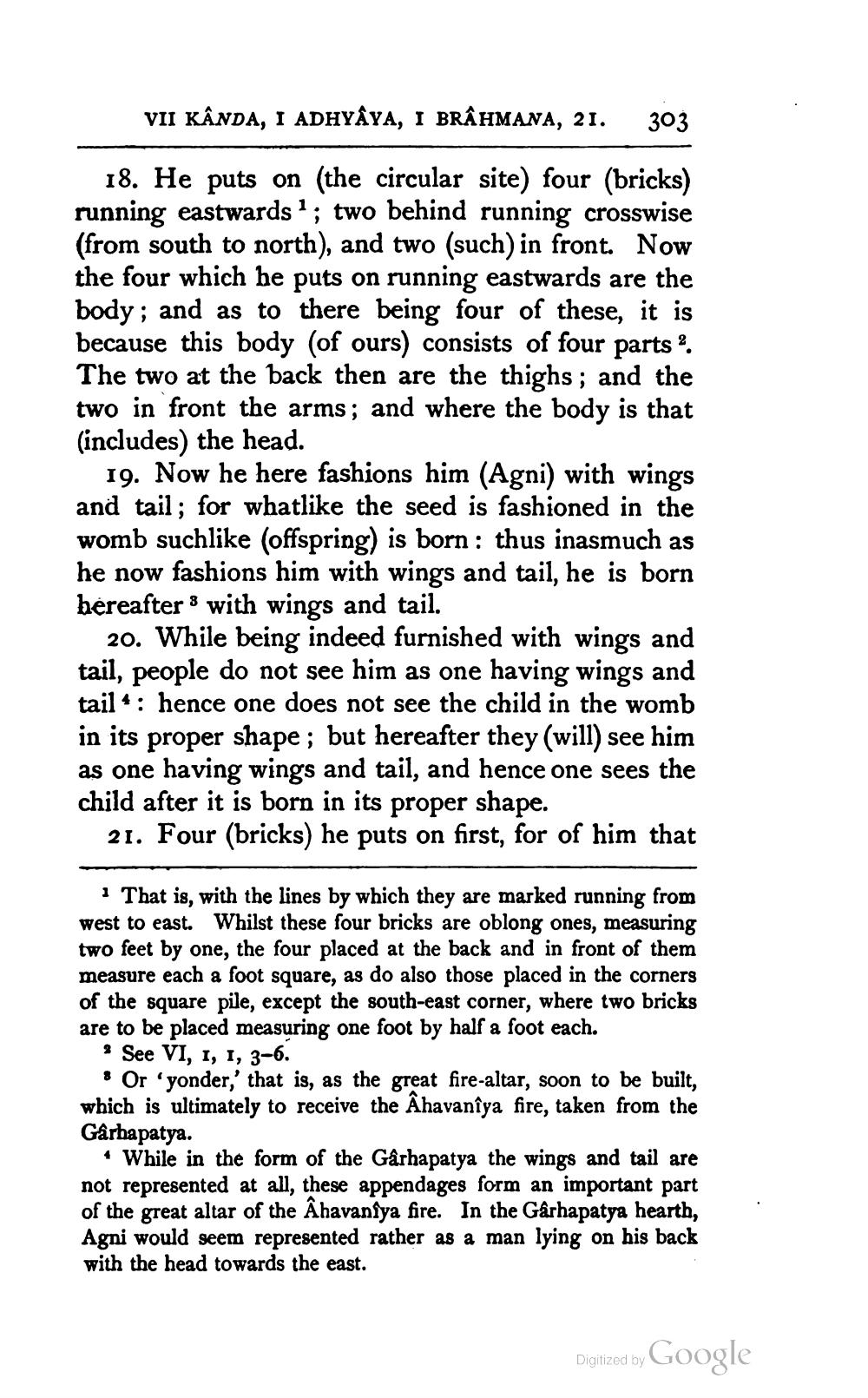________________
VII KÂNDA, I ADHYAYA, I BRÂHMANA, 21.
303
18. He puts on (the circular site) four (bricks) running eastwards ? ; two behind running crosswise (from south to north), and two (such) in front. Now the four which he puts on running eastwards are the body; and as to there being four of these, it is because this body (of ours) consists of four parts 2. The two at the back then are the thighs; and the two in front the arms; and where the body is that (includes) the head.
19. Now he here fashions him (Agni) with wings and tail; for whatlike the seed is fashioned in the womb suchlike (offspring) is born : thus inasmuch as he now fashions him with wings and tail, he is born hereafter 8 with wings and tail.
20. While being indeed furnished with wings and tail, people do not see him as one having wings and tail 4: hence one does not see the child in the womb in its proper shape ; but hereafter they (will) see him as one having wings and tail, and hence one sees the child after it is born in its proper shape.
21. Four (bricks) he puts on first, for of him that
1 That is, with the lines by which they are marked running from west to east. Whilst these four bricks are oblong ones, measuring two feet by one, the four placed at the back and in front of them measure each a foot square, as do also those placed in the corners of the square pile, except the south-east corner, where two bricks are to be placed measuring one foot by half a foot each.
* See VI, 1, 1, 3-6.
8 Or 'yonder,' that is, as the great fire-altar, soon to be built, which is ultimately to receive the Âhavanîya fire, taken from the Gårbapatya.
+ While in the form of the Gårhapatya the wings and tail are not represented at all, these appendages form an important part of the great altar of the Âhavaniya fire. In the Gârhapatya hearth, Agni would seem represented rather as a man lying on his back with the head towards the east.
Digitized by Google




